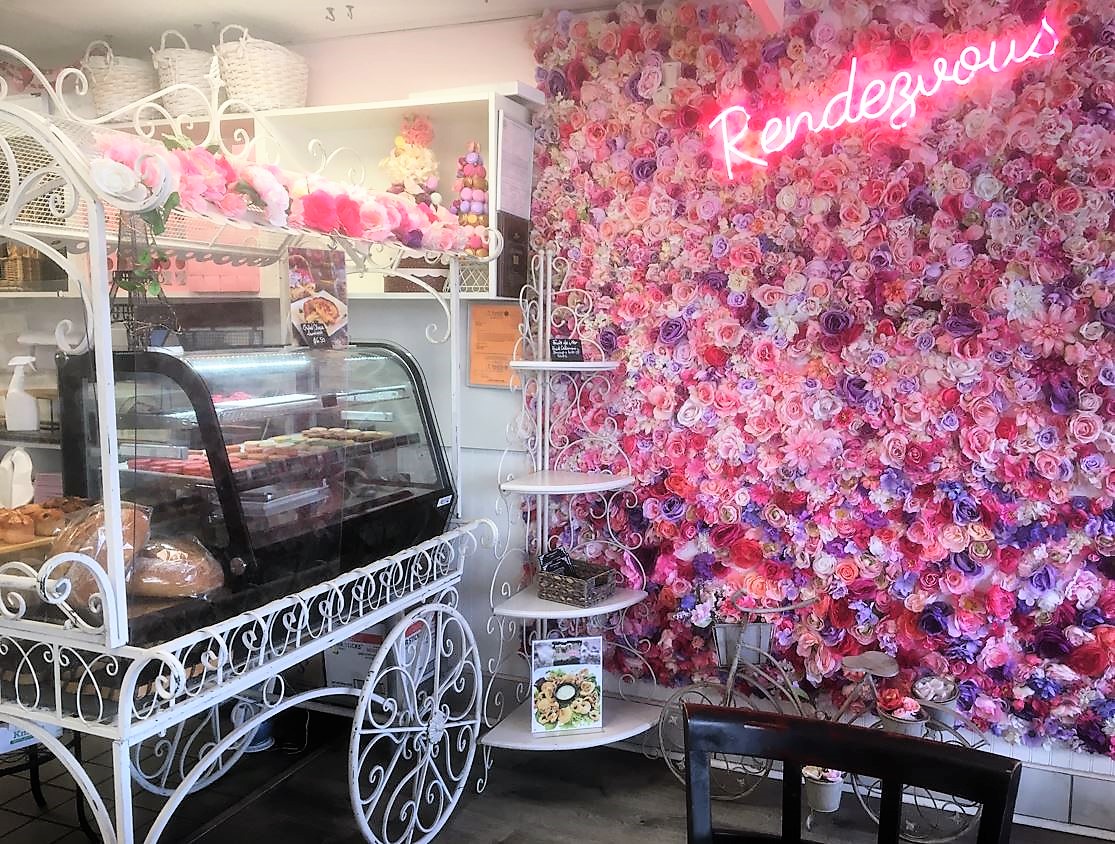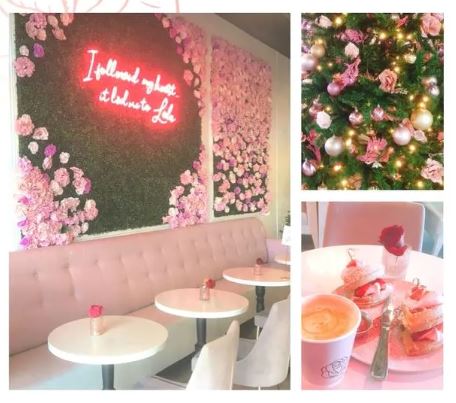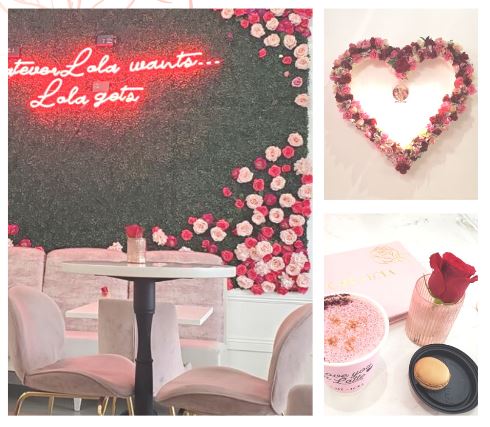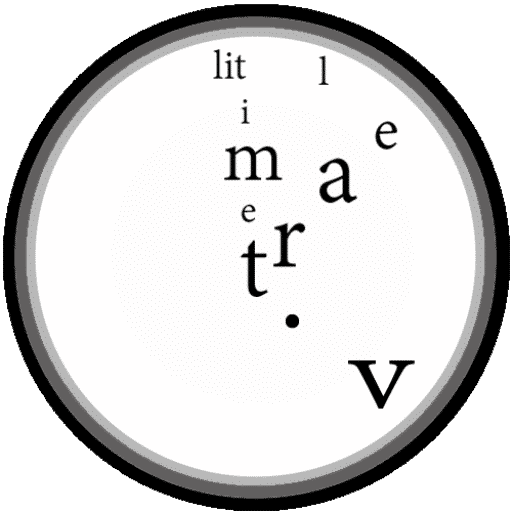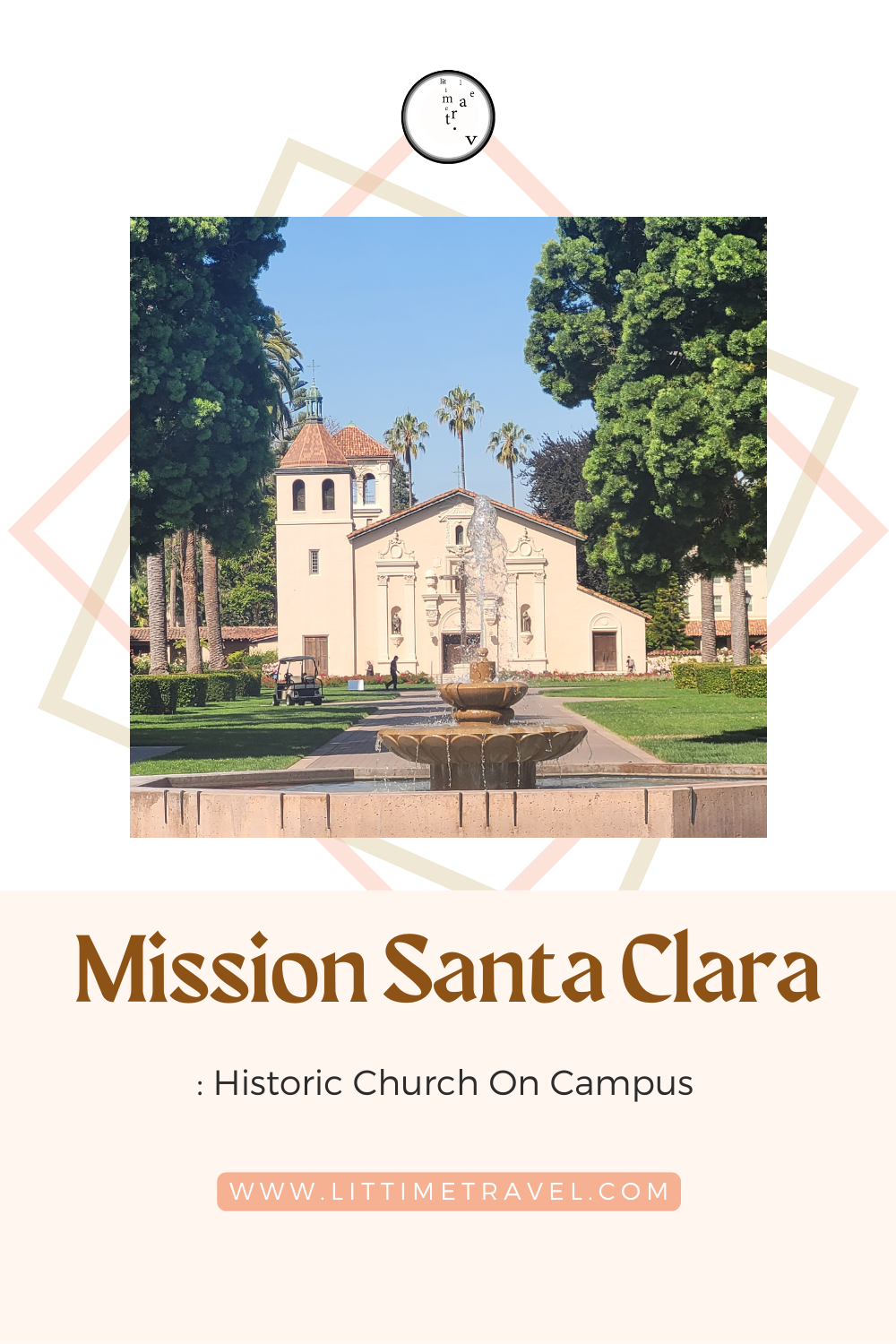
Continuing on with my long overdue trips to California’s 21 missions, I arrived at the next mission on my list: Mission Santa Clara de Asís. As its name indicates, I thought that it was located somewhere in the city of Santa Clara. But I didn’t expect it to be sitting right at the heart of Santa Clara University!

Santa Clara University

Founded in 1851 (during the Gold Rush!), Santa Clara University is a private Jesuit Catholic university. According to the official SCU website, this 174-year-old school is California’s “oldest operating institution of higher learning.” But while SCU was the first to open its doors, the University of the Pacific (also founded in 1851 as “California Wesleyan College”) was the first to receive a state charter. Regardless of technicalities, both Santa Clara University and the University of the Pacific are the oldest universities in California. (Which I had always assumed was UC Berkeley!)

But before this historic campus, of course, was the even more historic Mission Santa Clara. The university was built around the Mission, which explains why it’s located literally right in the middle of the campus, surrounded by students going to and from their classes.


👉Fun Facts about Santa Clara University

#1: The university was originally an all-boys preparatory school called, “Santa Clara College.” It became “The University of Santa Clara” in 1912 and the first Catholic, coed university in California in 1961 when female undergraduates were admitted.

#2: The founder and first president of SCU was John Nobili, S.J.

Born “Giovanni Pietro Antonio Nobili” in Rome, he became a Jesuit priest and missionary who was assigned to the Oregon Territory. When he came to California, he visited San Francisco and San Jose, and he was appointed as a pastor at Mission Santa Clara. The preparatory school he founded in 1851 became the Santa Clara College and eventually, the Santa Clara University we know today. There’s a street (Nobili Avenue) and residence hall (Nobili Residence Hall) named after him.

#3: SCU’s mascot is a bronco, which I found out from Oxford Languages is a wild/half-tamed horse of the western U.S. And specifically, their mascot is called, “Bucky the Bronco.” Though I couldn’t meet Bucky the Bronco during my visit, I did find this bronze statue of what appears to be a bronco:

Update 8/27/2025: I got to see cute versions of Bucky the Bronco at the SCU student store!

Lovely Campus
Not only does SCU boast of long history, but it also is such a pretty campus, with brightly colored roses and lush lavender growing here and there. The overall aesthetics of the campus give the impression that it’s being maintained with utmost care.






Mission Santa Clara de Asís: The Beginnings

Mission Santa Clara was the 8th California mission established by Junipero Serra, coming after Mission San Francisco de Asís aka Mission Dolores (HERE is my post on the 6th CA mission) and Mission San Juan Capistrano. Founded in 1777, the settlement outpost was first named “La Misión Santa Clara de Thamien,” at a Native American village of Socoisuka located on the Guadalupe River. There, the Franciscans shared Christianity to the Ohlone people.

Multiple Reconstructions & Relocations
Per various sources, natural disasters such as flood, earthquake, and fire led to several relocations of the mission; it was rebuilt 6 times and relocated 5 times since 1777!



In addition to multiple reconstructions, the Mission and its inhabitants have been through much over the decades: initial success as a Spanish Catholic mission, cultural conflicts, epidemics, and changes in ownership, like most California missions. It was established and owned by the Spanish Franciscans until Mexico’s secession from the Spanish Empire, during which the ownership went to the Ohlone people and fell into decay due to insufficient funds. Then under the ownership of Jesuit priests, including John Nobili, the Mission became Jesuit and the heart of SCU ever since.


Visiting Mission Santa Clara de Asís

One of the first things you will inevitably notice when you arrive at the Mission is the big cross in front of the church building. The cross at one of the entrances to the campus was a marker for the Mission’s third site. This cross contains “a portion of the original cross first erected by Fray Tomas de la Peña, O.F.M. before the entrance to the first Mission Santa Clara de Asis” at its base:


Behind the wooden cross is the beautifully carved facade of the chapel with sculptures of three different individuals on it:

They are St. John the Baptist (left), St. Clare (middle) who the Mission is named after, and St. Francis (right):



According to this very informative signage nearby the Mission, the facade has changed multiple times since 1825. It’s fascinating to see the various facades of the Mission throughout its history:

✝️More Crosses & Roses🌹
There are also these small white crosses placed out in front of the Mission. I didn’t know what they were until after stopping by the Visitor’s Corner inside, but they are crosses memorializing the “Martyrs of El Salvador” who were murdered “by government forces at the Jesuit University of Central America in El Salvador” in 1989. The eight crosses bear the name of each of the martyrs.

Around the church building are more beautiful roses:

Left and right, there were just bushes after bushes of vibrant roses:



There’s a rose garden within the walls of the Old Cemetery, too.

The gates were locked, and sure enough, it says online that the cemetery is closed to the public as a “memorialized area for those still buried” (SCU.edu).

Update 10/20/2025: I found out that the beautiful roses next to the white crosses are memorial roses, “dedicated to those who lost their lives or were affected by the attack on the United States and the world on September 11, 2001.”


Outer Garden & Sacred Heart Statue
There’s another garden on the other side of the chapel.

On the left-hand side of the chapel, is the “Mission Gardens” area that’s open to the public. It’s a lovely area where a statue of Jesus stands, surrounded by ever-beautiful roses. It’s called the “Sacred Heart Statue” on the map (I found out later that it was built to cover the old Mission water well!)



Wisteria Arbor & More
Next to the Sacred Heart Statue is the Wisteria Arbor, which I read are over 160 years old! I visited during the summer so I couldn’t see any wisteria in bloom; but they say if you visit during the spring, you’ll get to enjoy the beauty & fragrance of this historic wisteria.


When you walk down the Wisteria Arbor, you’ll get to where the “Former Padres Dormitory” used to be (somewhere on the left-hand side in the photo below):


I didn’t really understand until I saw this illustration online showing what the old Mission would have looked like in its original form:

So the Mission today is missing some parts of the Quadrangle and the Padres Dormitory.

But the original Adobe Wall and Lodge from 1822 (the left and top sides of the Quadrangle) remain standing today.
The Adobe Wall & Lodge & Beyond

Having survived the 1926 fire that destroyed all the other parts of the 1822 Misssion, the Adobe Wall and Lodge are the oldest structures on campus and look as such. Wait, they’re also the “oldest structures on any college campus in the West” (Mission Map)!
You can even see the individual adobe bricks inside the wall:


Further beyond are where there used to be an ancient olive orchard that provided olives and oil.

And there were remnants of these Mills/Grinding Stones, which I read were used to process olive oil, grains, and corn:


You can also find another rose garden (where one of the mills/grinding stones is), an area of Ethiopian/Abyssinian Roses, a granite obelisk, and an observatory:


The areas next to the Ricard Observatory were also where a fruit orchard and vineyard had once existed.
Inside Mission Santa Clara de Asís

To be honest, I didn’t know how to get inside the Mission. Mission Dolores had a signage directing people where to enter, but Mission Santa Clara didn’t. As I didn’t want to barge in on a service inside a historic property and an active campus church, I spent some time lingering outside totally unsure how to get in. But luckily, I ran into a student worker at SCU who let me inside the chapel after making sure that the church was open and no event (i.e. mass services, weddings, funerals, baptisms) was taking place within.

I entered through the main entrance door and immediately faced the decorative interior of the chapel and sanctuary at the back:


I think I was first surprised by how colorful the ceiling was in its pink and sky-blue hues. And how long the chapel was, with intricate chandeliers (total of 3) and individual wooden chairs instead of pews. It was definitely unique and different from Mission Dolores.

Above the Vestibule was an organ donated by a generous couple:

…and down the chapel were lamps with images depicting the final days of Jesus’s ministry, before His resurrection:


Here’s a closeup of one of the lamps, lighted, too:

Side Chapels
I was amazed by the details on all the paintings, sculptures, and wall decorations as I made my way down to the sanctuary:







The above “Catala Crucifix” is inside one of the 7 side chapels. It’s called “Catala Crucifix,” because Father Magín Catalá used to pray before it. Magín Catalá was a Spanish missionary born on January 30, 1761 at Montblanc in the Diocese of Tarragona, Spain. He joined the Franciscan Monastery in Barcelona when he was just 16 years old and was ordained a priest in 1785. From Cádiz, Spain, he traveled to Mexico in 1786 to work for the missionary college of San Fernando. After about 8 years, he arrived in California and spent the following 36 years working at Mission Santa Clara (from 1794-1830).

*There’s also a plaque on the outside of the chapel marking Magín Catalá’s cell where he passed away:


The Sanctuary
After taking in all the artworks and information displayed in each side chapel, I finally reached the sanctuary, which is made up of the main altar and pulpit. Though it wasn’t the ceiling of the Sistine Chapel by Michelangelo, the sanctuary’s ceiling, nonetheless, was stunning to view!


Visitor’s Corner & Bell Tower

While I did see students giving tours to visitors, it says online that guided tours are not offered, with the exception of schools and class groups who can arrange tours through the de Saisset Museum located right next to the Mission. But for regular visitors like me, there are Self-Guided Tour pamphlets (which I’ve included and mentioned multiple times above) available at the Visitor’s Corner. It can also be downloaded online HERE.

Also at the Visitor’s Corner are informative tapestries and a tablet with more interesting facts about the Mission, along with plaques commemorating Santa Clara students and faculty veterans.



The steps to the Bell Tower are on the other side but are not open to the public.

Per Wikipedia, the original bells were donated by King Charles III of Spain in 1777 and rang every evening per a promise made to the king.

Today, a recording of the bells are played instead of actually ringing the bells. I actually got to hear it when I visited on a Friday morning:
There are 3 bells, cast in 1798, 1799, and 1805, respectively (Santa Clara University). One of the three bells donated by King Carlos IV but was destroyed in a fire, so King Alfonso XIII donated a replacement in 1929. The replacement (fourth) bell is on display at the de Saisset Museum.

Alas, the Museum was closed! 😞

I recommend NOT visiting Mission Santa Clara during the summer like I did… So that you can explore de Saisset Museum’s California Stories from Thámien to Santa Clara Exhibit showcasing Mission era artifacts, including the fourth bell.
Update 10/23/2025: I revisited and checked out the de Saisset Museum this fall. HERE is a full review of the museum!
St. Francis Chapel (The OG Chapel)
After exploring inside the Mission, I walked around the garden/cemetery to get to the Mission Office, in hopes of finding a souvenir shop next to it. The door was shut, so I tried knocking.

To my pleasant surprise, I got to meet the Director of Development of Mission Santa Clara de Asís, Andrew Chai! He let me inside the Office and showed me the St. Francis Chapel, which has the actual remains of the original Mission church, including its adobe wall, floor covering, and artifacts. I was so lucky to have visited during the Mission Office’s hours, which is the only time when you can view the historic chapel:
More Cool History
Not only did Andrew show me the insides of St. Francis Chapel, but he also shared with me a plethora of cool historical facts about the Mission I hadn’t known. He told me that…
🧱There used to be an old well at the Mission. But when it no longer was used, the statue of Jesus was built to cover the hole that had lost its purpose.
🧱The Mission church today was reconstructed with different materials (i.e. steel) and built in different dimensions (longer and larger to fit all the students at SCU) from the original structure. The original materials, paint, and shape of the Mission can be seen inside the St. Francis Chapel, which is much smaller than the reconstructed Mission.


🧱And here’s something literally wild: these paw prints are from animals (maybe dogs?) who couldn’t resist stepping on the floor before they had dried completely. Thanks to them, we get to see their little footprints preserved for hundreds of years inside St. Francis Chapel!


🧱There used to be a small, redbrick student chapel adjacent to the Old Cemetery. But after the 1926 fire, only the entry porch remains today as steps leading to the Cemetery.



🧱The Old Cemetery actually goes beyond its walls and into the grassy lawns next to the Mission. Unaware students and visitors might be sitting or walking right above cemetery grounds!

🧱As mentioned previously, other original structures onsite are the Adobe Wall and Lodge. I was told that the Lodge used to be a kitchen and still functions as one, albeit with stainless appliances.
….and so much more!
⛪ The Mission Office & Passport 📃
Everything Andrew shared with me made me appreciate the Mission so much more. If you want more than just a reading from pamphlet/guide/online resources, I highly recommend that you visit the Mission Office during their hours. (Thank you Andrew for making my visit to the Santa Clara Mission all the more memorable & fun! 😊)

The Mission church is open every day, from 7 AM to 7 PM, but the Mission Office is open from Monday to Friday, from *8 AM to 4 PM. (*While it says 8 AM online, it says 8:30 AM inside the Visitor’s Corner… Maybe the hours have been slightly adjusted recently?)

Not only can you get a glimpse of St. Francis Chapel (and 🐾!) through the Mission Office, but you can also get a stamp if you have a “Missions passport.” According to California Missions Trail, this passport is a pocket-sized booklet/pamphlet for recording all the Missions you visit. Apparently, if you visit all 21 Missions and collect stamps for each, you can receive a Certificate of Completion. (They also give out “Certificate of Progress” for those who collect stamps for 6 Mission sites.)
While passports are “available at most of the Missions,” I couldn’t get mine at SCU! 🥲*Per the California Mission Store by Lowman Publishing, passports are available for purchase only at the following 10 missions: Mission San Diego, Mission San Luis Rey, Mission San Gabriel, Mission San Fernando, Mission San Buenaventura, Mission San Miguel, Mission San Antonio, Mission San Juan Bautista, Mission San Carlos in Carmel, and Mission Dolores in San Francisco.
Update 8/27/2025: I finally got mine and began my stamp collecting journey! HERE is an entire post on Missions Passport.
Speaking of Mission-related items, there isn’t a gift shop at Mission Santa Clara. But there are some Mission-related items at the campus store:




But I learned that purchases made there don’t support the Mission. So if you want to support Mission Santa Clara, donations can be made HERE.

👉Fun Facts about Mission Santa Clara
#1: Mission Santa Clara once had the largest Indian population of any California mission.

#2: It was the first CA mission named in honor of a woman, Saint Clare, who followed Francis of Assisi, the founder of the Franciscan Order.

#3: The city, county, and university are all named after the Mission; the logo of the university is the Mission church itself.

#4: It’s the only mission located on a university campus:

Mission Santa Clara Today

With its Jesuit origins focusing on education and its Franciscan nature of serving the poor and marginalized, the Mission continues to serve as the spiritual and historic heart of Santa Clara University. Soon reaching its 250th anniversary in 2027, Mission Santa Clara de Asís is a lovely chapel of California’s unique history. Its story of faith, sacrifice, and diversity are being well-preserved on the SCU campus adorned with historical signages and roses.

P.S. Some tips & advice: I highly recommend visiting Mission Santa Clara during the spring, when you can enjoy the Wisteria Arbor in full bloom and visit the de Saisset Museum. Plus, it can get quite hot during the summer in Santa Clara…Plus, if you plan on taking photos like I did, be aware that Santa Clara University is a private property and permits are required. Per the SCU webpage HERE, I applied for permission by contacting the Mission Office.
P.P.S. Not only does SCU abound with roses, signages, and history, but also the campus teems with squirrels. This fellow followed me for a little while during my self-guided tour:
P.P.P.S. Did you know that you can enter inside Mission Santa Clara from your home? Link to virtual tour👉https://my.matterport.com/show/?m=GtTkK1X7Zzf
P.P.P.P.S. Here are more photos of the aesthetic Santa Clara University and Mission Santa Clara!



































Footnotes






